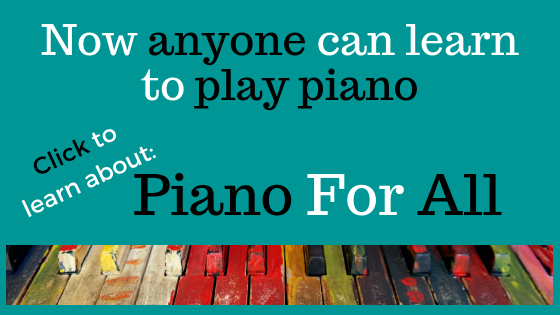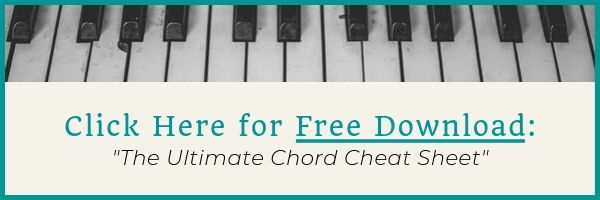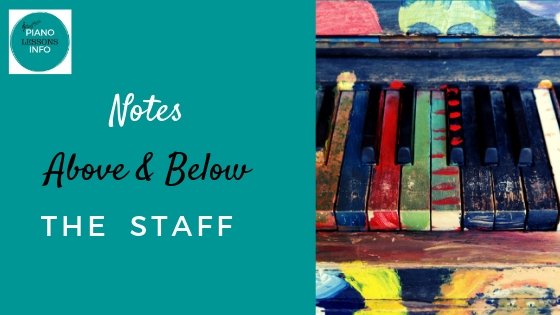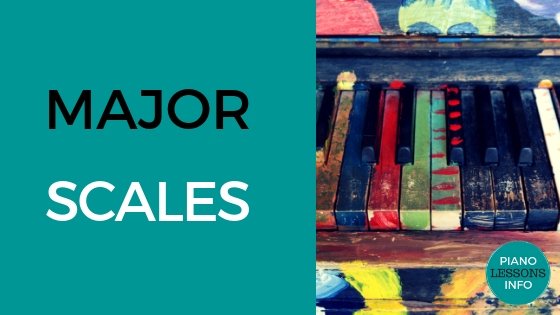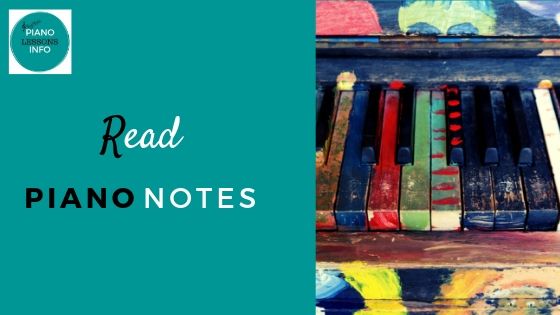Learning Piano Music Notes
It's all about learning the patterns! This page on piano music notes will go beyond the basics.
For an overview of just the basics go to, how to read piano notes.
On this page, we’ll be talking about:
1. How to read notes that are not on the lines and spaces
2. Sharps and Flats
3. The types of notes and how many beats or counts they get.
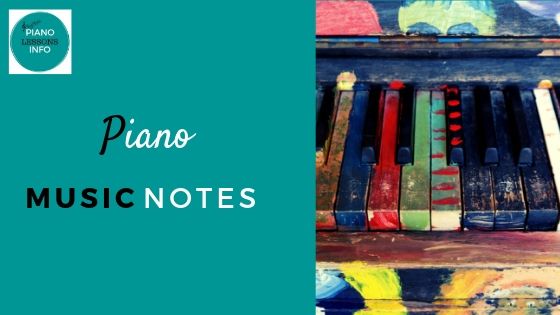
Here's a quick refresher of the lines and spaces.
 Grand Staff
Grand StaffLedger Lines
First, we’ll start with reading the notes that are not on the staff. The staff is the group of 5 lines.
(To
see the notes on the lines and spaces, look at the note
charts.)
First a reminder: notes
on the piano alternate from line to space
or space to line. When going up the musical alphabet, you are going
from line to space or space to line. This is critical to playing piano
music notes!
In order to read the piano music notes that are not on the staff, this is what you need to do. Keep counting up from line to space through the musical alphabet until you reach the note you want to know.
For example, the very highest note on the treble clef staff is an F. The next one in the musical alphabet is G. G sits on top of the staff.
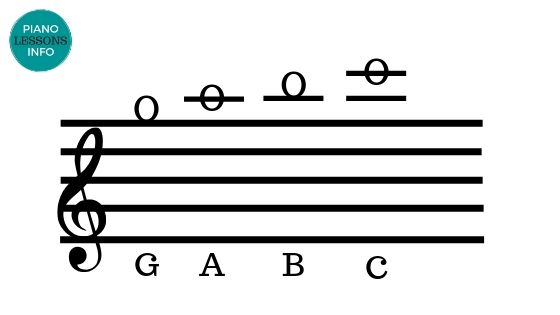
(Check out the ledger lines piano games here.)
To make a note even higher than that one, you need to draw a line. It’s called a ledger line.
To learn the notes above or below the staffs, just count up or down the musical alphabet. Remember to alternate line – space – line – space.
Sharps and Flats
You will also see sharps and flats in front of notes. The sharp
– A flat –
In playing music, you will
come across key signatures.They tell you that
certain piano music notes will need to be sharp or flat all the time.
You will see a natural sign - ![]() if it’s not supposed to be sharp or flat. The main thing is to remember
that those notes are sharp or flat always while you’re playing in that
key. For more information on key signature’s, click
here.
if it’s not supposed to be sharp or flat. The main thing is to remember
that those notes are sharp or flat always while you’re playing in that
key. For more information on key signature’s, click
here.
Notes and Beats
Now to read piano music notes, you need to know more than where they are on the keyboard. You also need to know how long to hold them. It has to do with counting.
When you are playing something, think of a drum beat in the background. You have to keep in time with that beat. Now picture the drum beat going.
Whole Note
A whole note will stay held down for 4 of the beats. A whole note gets 4 counts.
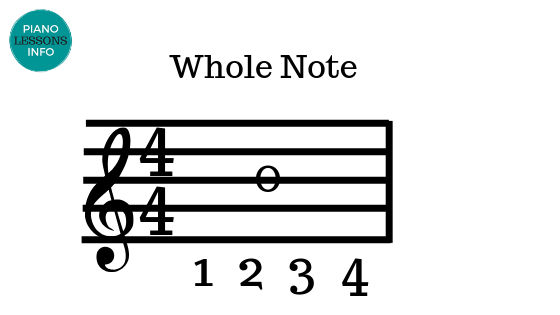
Half Note
A half note will stay held down for 2 of the beats. A half note gets 2 counts.
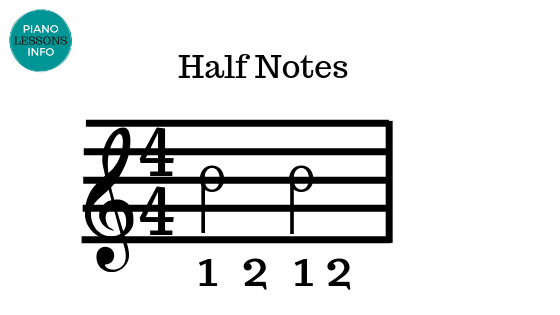
Quarter Note
A quarter note is the drum beat. It plays at the same time.
A quarter note gets 1 beat.
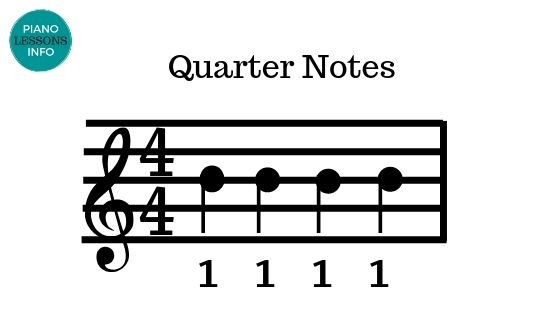
Eighth Notes
An 8th note will play 2 times for every one drum beat. Two 8th notes get one count. One 8th note gets half a beat.
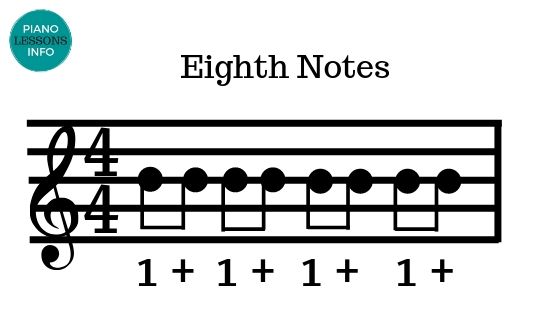
Sixteenth Notes
And finally, 16th notes. They play 4 times for every drum beat. Four 16th notes get one count. One 16th note gets a quarter of a count.
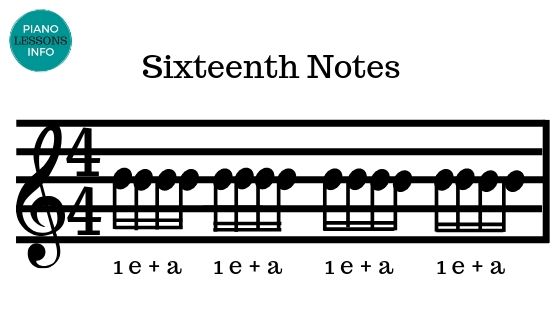
Next Steps:
To learn all of these parts of
music at once is a little overwhelming. It can be good to take
things slowly and learn and practice, learn and
practice. I always recommend taking a
course in order to really get things down. It will really speed up your
learning and playing in the long run.
For this area of things, I especially recommend an online course. Most of what you need to know is a matter of practice. Plus, the online courses are cheaper than piano lessons. You have now learned a great deal about piano music notes!
Return from
Piano
Music Notes
to Piano
Lessons Homepage.
Free Download:
Ultimate Chord Cheat Sheet

Subscribe below and get free access to the (printable) Ultimate Chord Cheat Sheet.
Recent Articles
-
Piano Notes Chart
Nov 20, 23 10:21 PM
Find a piano notes chart for treble clef and bass clef notes as well as the different types of notes. -
D Chord on Piano + Diagram, How To & Theory
Oct 24, 23 12:20 AM
Learn how to play the D chord on piano with diagram, fingering, D/A, D/F# and a theory explainer. -
Diminished Piano Chords: Chart & How to Make Them
Oct 09, 23 09:23 PM
Learn the different diminished piano chords and how to make them. Here you'll find both a diminished chord chart and an explanation.
- Home
- Music Notes
Free Download:
Ultimate Chord Cheat Sheet

Subscribe below and get free access to the (printable) Ultimate Chord Cheat Sheet.


